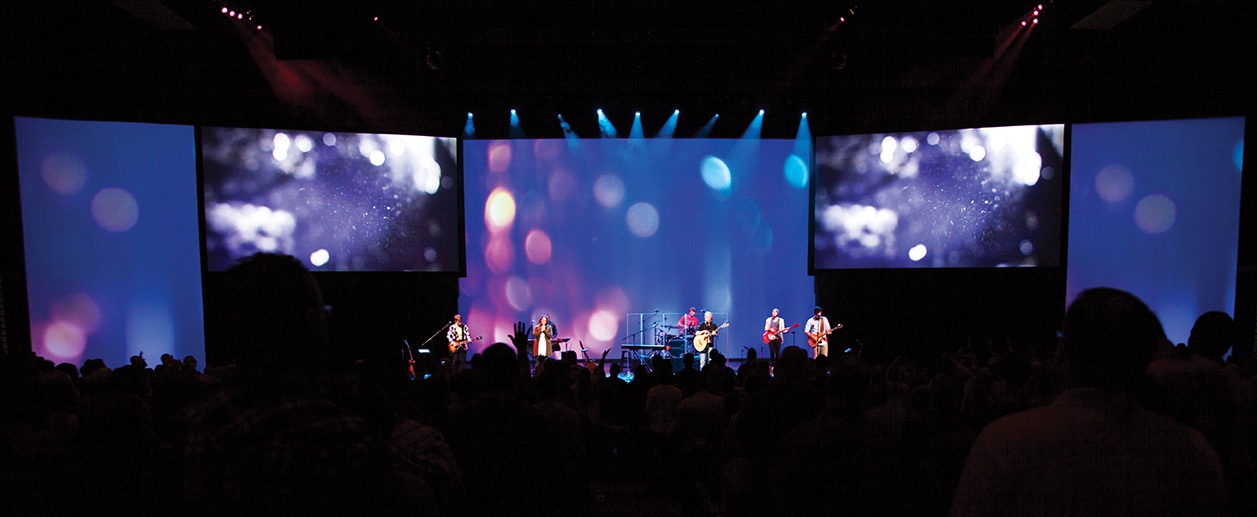By Dr. Tom McElheny
Historically, church services have been held in a dedicated worship facility. In the 21st century, anything can be a worship facility. From converted gyms to old retail spaces, many congregations are meeting in non-traditional spaces. The cost for renting or buying these is often cheaper than a traditional church building, but the unconventional architecture presents a challenge when it comes to furnishing the space.
Over the past 30 plus years, I’ve helped tens of thousands of churches evaluate and maximize the effectiveness of their worship spaces. Here are some of the lessons learned in that time.
- Let Your Worship Style Guide You
The first place you should look to for guidance is the worship style of your services. A quiet, liturgical service will have very different needs than a service that incorporates a praise and worship band or altar calls.
The former worship service would be best suited to a traditional layout and furnishings: straight rows of chairs, a lectern or pulpit, and a communion table (if communion is a part of the service). The latter would probably put more emphasis on the stage area, with chairs spaced widely apart so that members can easily get out of their seats.
- Opt for Flexible Seating
Pews are the classic image of church seating, but for a non-traditional worship space, they probably aren’t the best option. Instead, opt for flexible church chairs that can be moved, rearranged, and stored, especially if you share the space with other tenants. You can even repurpose your chairs for other ministry efforts. Rather than buying seating for women’s group or Bible study, simply borrow chairs from the main sanctuary area.
- Invest in Moveable Stages or Platforms
While traditional church facilities usually come with a built-in platform or stage area, a non-traditional space may not have these features. You might be left with a blank area to furnish yourself. In this case, movable stages or platforms are a great solution. They are easy to transport and store, and they can be rearranged to adapt to multiple uses.
If your worship service features a choir, you might consider investing in risers rather than a stage, since these are a more traditional choral setup.
- Partition a Large Space
If you find yourself with a larger space than necessary for the main sanctuary, don’t let that extra space go to waste! Invest in some sturdy partitions or room dividers. Many brands are even sound absorbent, so you can hold multiple events at the same time in your space or create a quiet working area.
- Determine Technology Specifications for the Space
Lighting and sound technology has come a long way in recent years. With so many options, you want to know the exact specifications before you start shopping. Be sure your facility’s electrical systems are or can be adapted to support the new technology you are considering. To allow for growth, be on the lookout for a setup that can easily be moved and is a bit bigger than you need now.
- Create Clear Signage
Signage, both exterior and interior, is essential for the non-traditional worship space. People look at a traditional church building and instantly recognize its purpose. This isn’t the case for a converted gym, warehouse, or other type of space. Make sure people driving by can clearly see your church’s name and logo. Likewise, clearly mark the way to the worship area inside.
The days of a traditional church setup are over. Now, more often than not, congregations are making their home in converted buildings. Follow these tips to make sure your space can accommodate all of your worship and ministry activities.
Dr. Tom McElheny has served as an elder and director of Christian education for three Sarasota, Florida, churches. He holds advanced degrees in business and education, and is chief executive officer of ChurchPlaza, www.churchplaza.com.




















